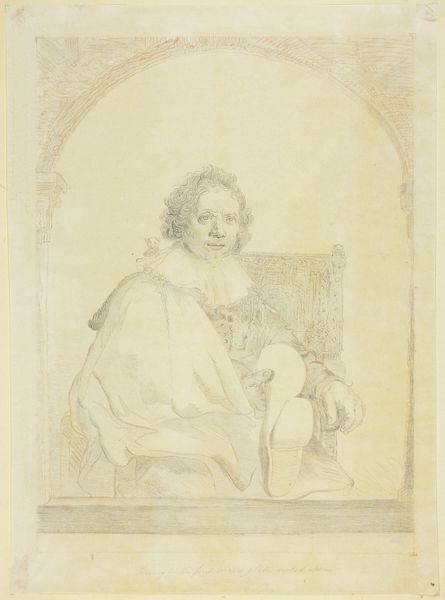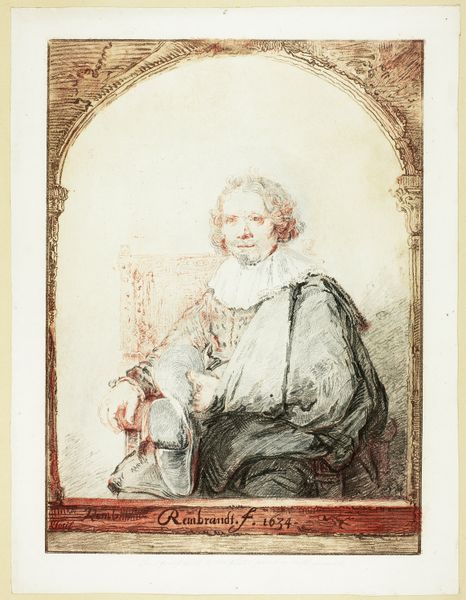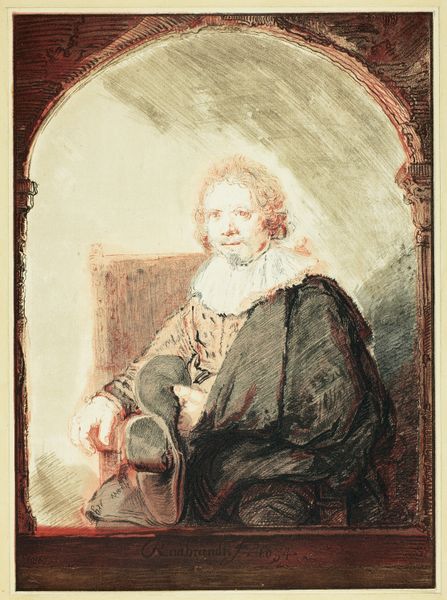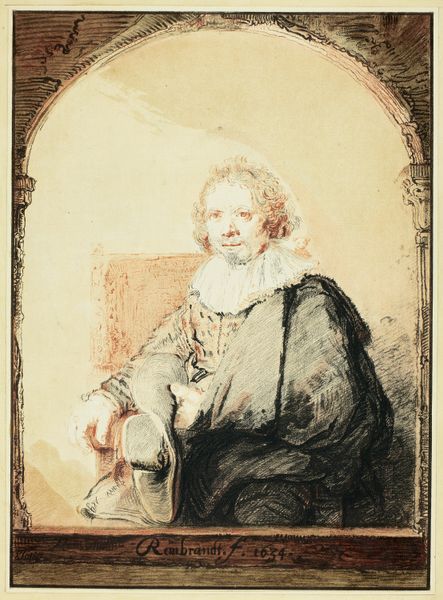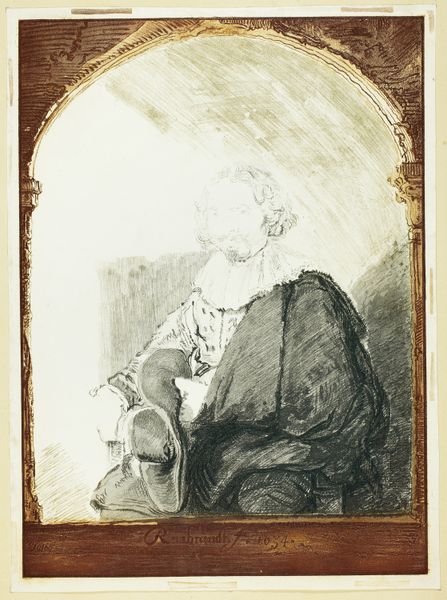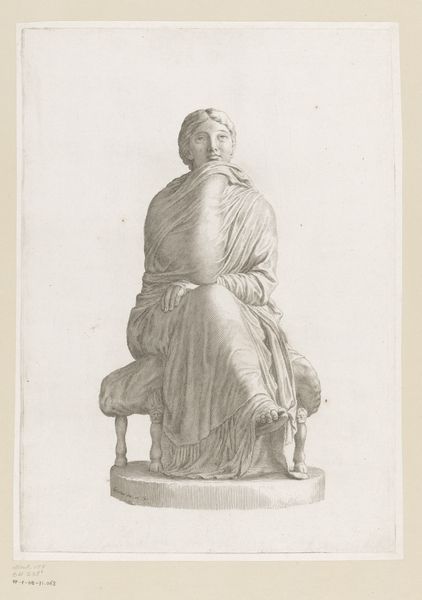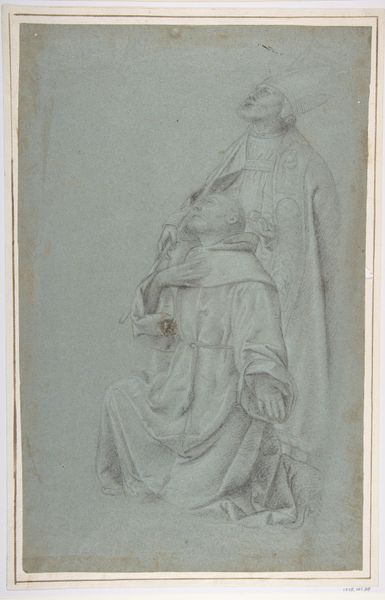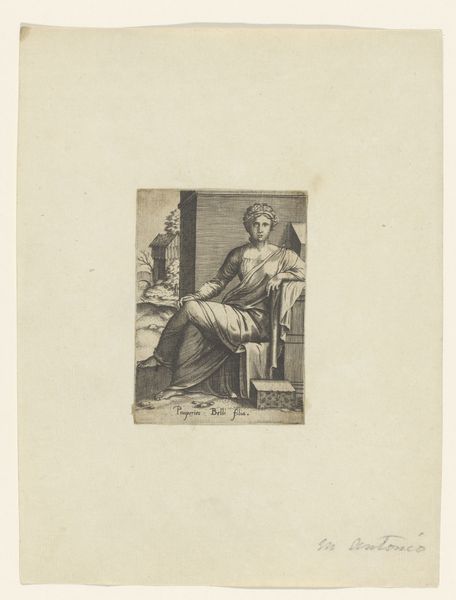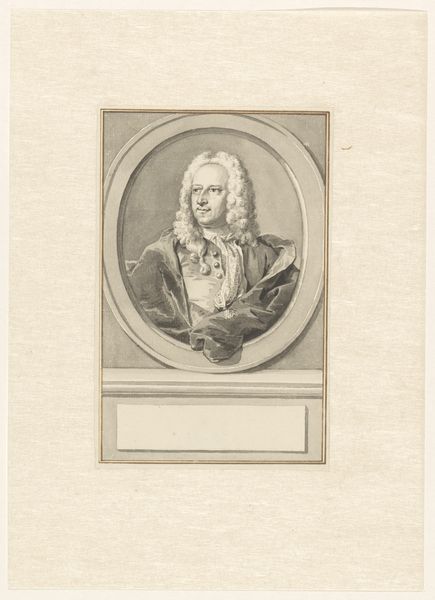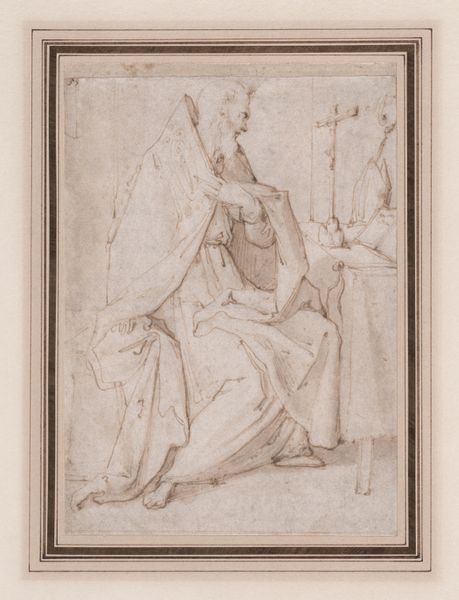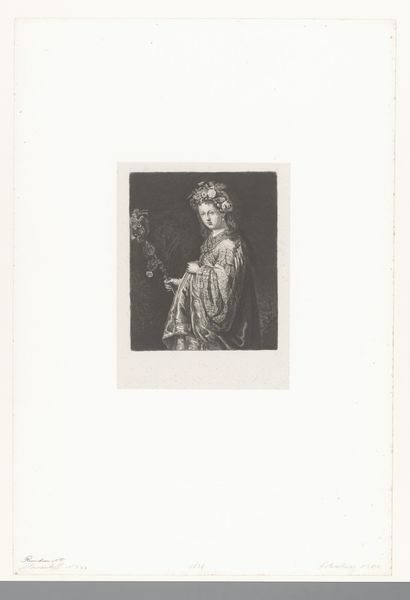
Portrait of a Man in an Arm Chair, from Collection d'imitations de Dessins d'après les Principaux Maîtres Hollandais et Flamands Possibly 1821
0:00
0:00
drawing, print, etching, paper
#
portrait
#
drawing
# print
#
etching
#
figuration
#
paper
Dimensions: 357 × 270 mm (image); 430 × 325 mm (sheet); 510 × 393 mm (secondary support)
Copyright: Public Domain
Editor: This etching, "Portrait of a Man in an Arm Chair," is attributed to Christian Josi and possibly dates back to 1821. What strikes me is the subject’s gaze – he seems to be looking directly at us. What do you see in this piece, considering its historical context? Curator: The gaze is certainly important. What I find compelling is the tension between its apparent directness and the role prints played in disseminating and, in a way, democratizing portraiture. Prints like these enabled a wider audience to engage with images of people, albeit usually still people of some status. This work, part of a collection imitating Dutch and Flemish masters, suggests a conscious engagement with artistic lineage. Editor: So, it’s not just about the man himself, but also about how the image circulates and what it represents in a broader cultural sense? Curator: Precisely. Consider the setting. The arch frames the subject, lending a sense of importance, almost like a stage. How does this stagecraft influence our understanding of the sitter’s status or the portrait’s intended audience? Is he performing for us or for posterity? Editor: That makes me think about how collections like these influenced art education and the public’s perception of “great masters." They shaped taste, right? Curator: Exactly! Print collections were powerful tools for establishing and reinforcing canons of artistic excellence, thereby shaping what was deemed valuable in art. To understand the image fully, we need to understand its life within collections like Josi’s and how such collections participated in the broader politics of taste. Editor: This was much more complex than I initially thought, it's not just a portrait of someone. Curator: Indeed. Art exists within networks of social, cultural, and institutional forces, not in a vacuum. Editor: This helps appreciate how reproductions create ideas, establishing the prestige of earlier images in a period with ever more availability of imagery.
Comments
No comments
Be the first to comment and join the conversation on the ultimate creative platform.
